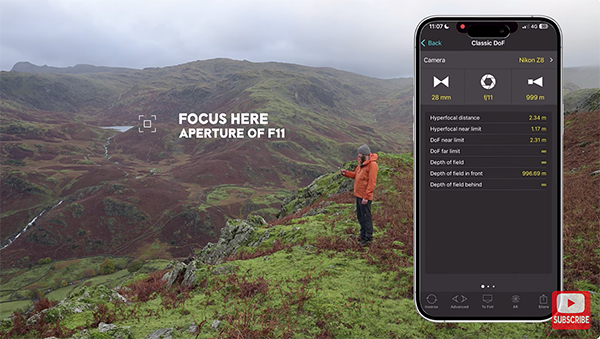If Your Photos Are Soft You’re Not Focusing in the Right Place (VIDEO)
Correct technique is essential for fast and precise focus, and sometimes it’s necessary to give your camera some help. That’s because if you focus on the wrong spot within the frame, all is lost before you snap the shutter—even if you use a high-end pro camera with a premium lens.
The interesting tutorial below from British outdoor photographer Nigel Danson reveals the various techniques he uses to nail focus virtually every time. He begins by describing several factors that impede properly focused images and concludes with a discussion of how and when focus-stacking is necessary—which in his view is “not as often as you think.”
Danson takes a fresh approach with this lesson by compartmentalizing his tips for lenses of different focal lengths from 16-70mm. Focusing techniques aren’t usually presented in this manner, but you see how critical this can be. He also defines important terminology that’s relevant for understanding all the methods you’ll learn.

One of the reasons to take a specific approach with different lenses has to do with how depth of field changes from wide-angles to telephotos—greatly reducing the zone of sharp focus as magnification increases—even with small aperture settings. In this regard he also provides the important reminder that every lens is sharpest at one particular aperture, and it’s not difficult to determine what f/stop that is.
You’ll also learn the difference between “acceptably sharp” and optimum sharpness—something that’s important to consider when making compromises between shutter speed, ISO, and aperture settings under a variety of lighting conditions. Other key variables include whether you’re shooting handheld or with a tripod, and if a subject is stationary or in motion.
Danson also describes how “hyperfocal distance” works to greatly increase your odds of success. He defines this concept as “the closest point you can focus on where everything from that point to infinity is acceptably sharp.” As you’ll see, your aperture setting is a key component of this equation.

According to Danson, acceptably sharp isn’t really sharp enough, and the remainder of the video reveals how to take sharpness to the max under varied conditions with different subjects, and with whatever camera and lenses you use. Along the way you learn how lens diffraction and other subtle variables can have a big impact on your results.
We suggest that you take a look at Danson’s instructional YouTube channel for more tips and tricks, especially if landscape and nature photography ring your bell.
And don’t miss the tutorial we posted recently from an equally adept pro on another important component of all great imagery; namely how to shoot perfectly exposed nature, wildlife, and landscape photos in different light.




